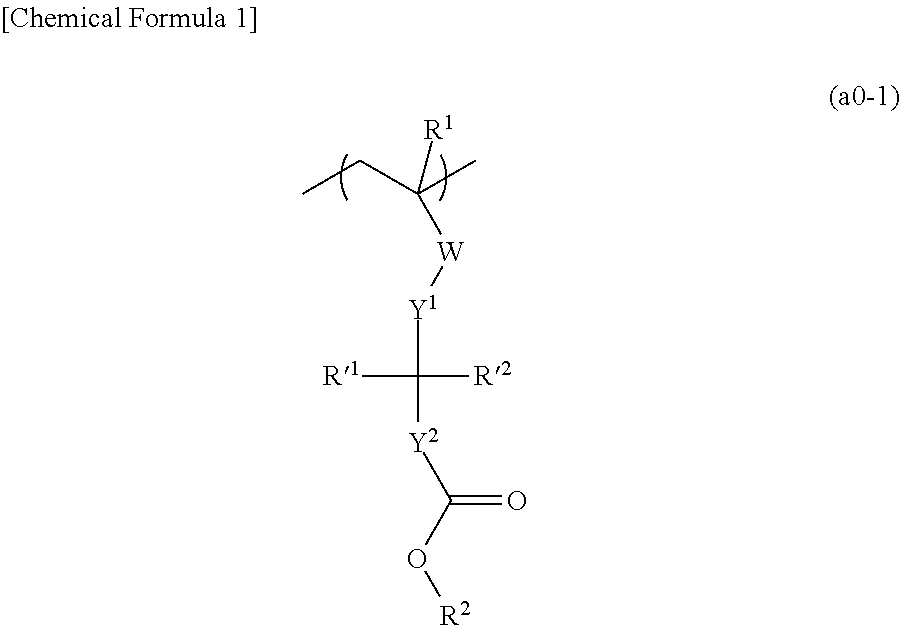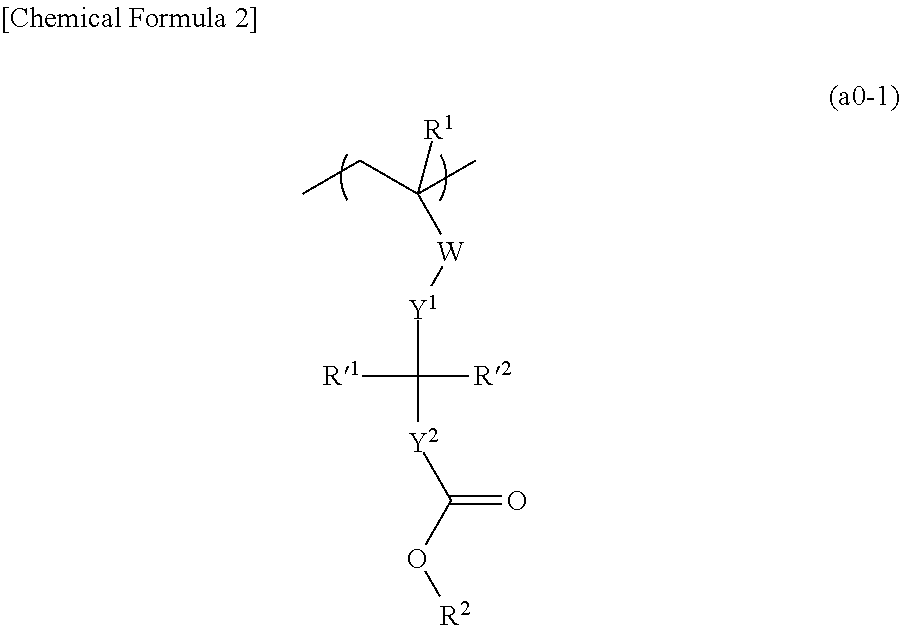Resist composition, method of forming resist pattern and polymeric compound
a composition and resist technology, applied in the field of resist composition, can solve problems such as difficult optimization of resins, and achieve the effect of excellent lithography properties
- Summary
- Abstract
- Description
- Claims
- Application Information
AI Technical Summary
Benefits of technology
Problems solved by technology
Method used
Image
Examples
examples
[0817]The present invention will be described more specifically with reference to the following examples, although the scope of the present invention is by no way limited by these examples.
polymer synthesis example
[0818]Polymeric compounds 1 to 63 were produced using the following monomers (1) to (24) which derived the structural units constituting each polymeric compound. The polymeric compounds 1,22 and 43 were synthesized as follows, and the other polymeric compounds were synthesized by a conventional method. Polymeric compound 45 could not be polymerized. With respect to the obtained compounds, the compositional ratio (the molar ratio of the respective structural units indicated in the structural formula shown below) as determined by carbon 13 nuclear magnetic resonance spectroscopy (600MHz 13C-NMR; internal standard: tetramethylsilane), and the weight average molecular weight (Mw) and the molecular weight dispersity (Mw / Mn) determined by the polystyrene equivalent value as measured by GPC are shown in Tables 1 to 6.
[0819](Polymeric Compound 1)
[0820]To a flask equipped with a thermometer, a reflux tube, a stirrer and an N2 feeding pipe was added 36.4 g of methyl ethyl ketone in a nitrogen...
PUM
| Property | Measurement | Unit |
|---|---|---|
| reaction time | aaaaa | aaaaa |
| reaction time | aaaaa | aaaaa |
| temperature | aaaaa | aaaaa |
Abstract
Description
Claims
Application Information
 Login to View More
Login to View More - R&D
- Intellectual Property
- Life Sciences
- Materials
- Tech Scout
- Unparalleled Data Quality
- Higher Quality Content
- 60% Fewer Hallucinations
Browse by: Latest US Patents, China's latest patents, Technical Efficacy Thesaurus, Application Domain, Technology Topic, Popular Technical Reports.
© 2025 PatSnap. All rights reserved.Legal|Privacy policy|Modern Slavery Act Transparency Statement|Sitemap|About US| Contact US: help@patsnap.com



